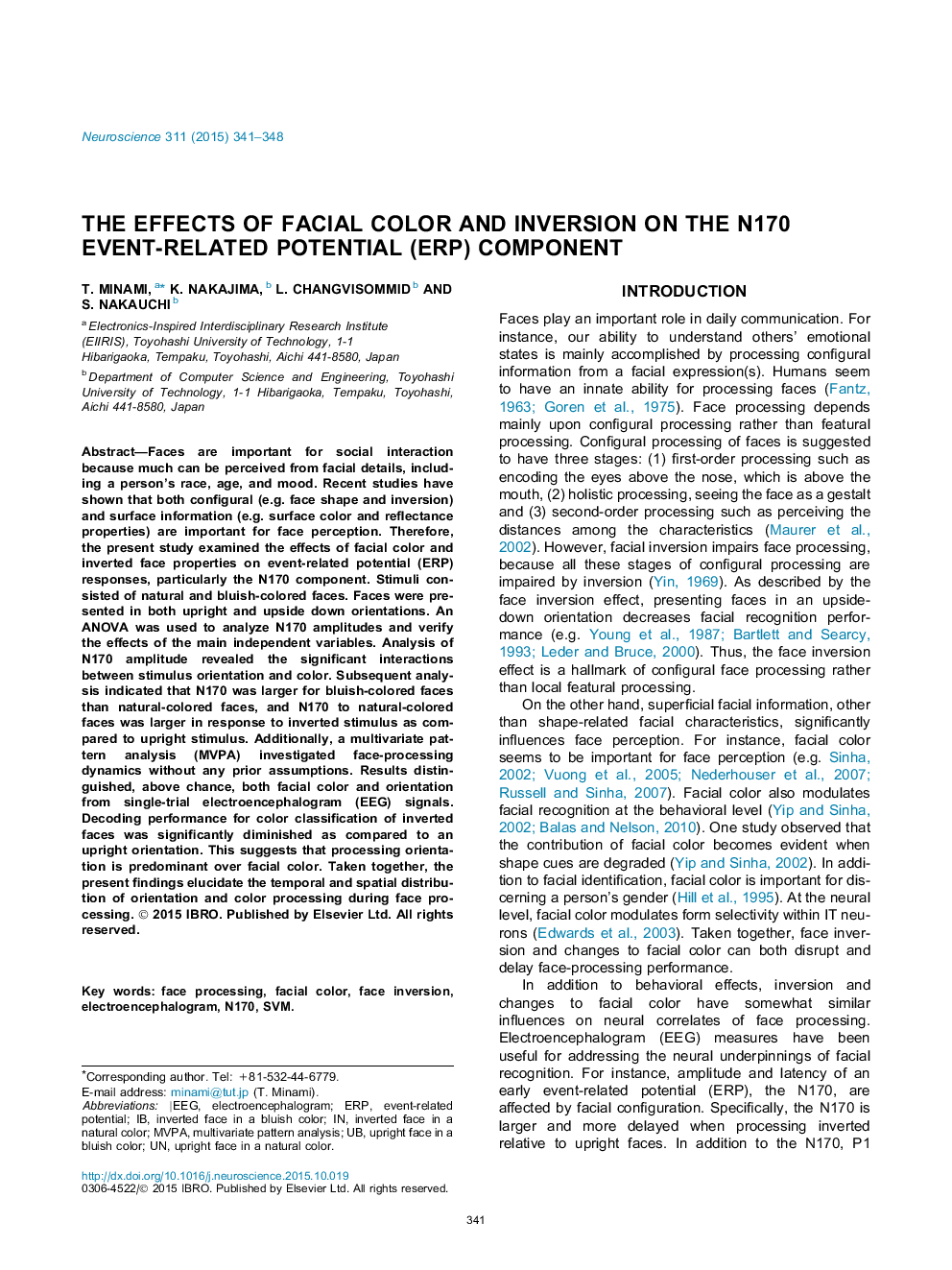| کد مقاله | کد نشریه | سال انتشار | مقاله انگلیسی | نسخه تمام متن |
|---|---|---|---|---|
| 6271656 | 1614765 | 2015 | 8 صفحه PDF | دانلود رایگان |

- The interaction between face color and face on the N170 component was investigated.
- Face color and orientation are not processed entirely independently during early stages.
- MVPA analyses were conducted on single-trial EEG data.
- MVPA results suggest that orientation decoding is predominant over facial color.
Faces are important for social interaction because much can be perceived from facial details, including a person's race, age, and mood. Recent studies have shown that both configural (e.g. face shape and inversion) and surface information (e.g. surface color and reflectance properties) are important for face perception. Therefore, the present study examined the effects of facial color and inverted face properties on event-related potential (ERP) responses, particularly the N170 component. Stimuli consisted of natural and bluish-colored faces. Faces were presented in both upright and upside down orientations. An ANOVA was used to analyze N170 amplitudes and verify the effects of the main independent variables. Analysis of N170 amplitude revealed the significant interactions between stimulus orientation and color. Subsequent analysis indicated that N170 was larger for bluish-colored faces than natural-colored faces, and N170 to natural-colored faces was larger in response to inverted stimulus as compared to upright stimulus. Additionally, a multivariate pattern analysis (MVPA) investigated face-processing dynamics without any prior assumptions. Results distinguished, above chance, both facial color and orientation from single-trial electroencephalogram (EEG) signals. Decoding performance for color classification of inverted faces was significantly diminished as compared to an upright orientation. This suggests that processing orientation is predominant over facial color. Taken together, the present findings elucidate the temporal and spatial distribution of orientation and color processing during face processing.
Journal: Neuroscience - Volume 311, 17 December 2015, Pages 341-348